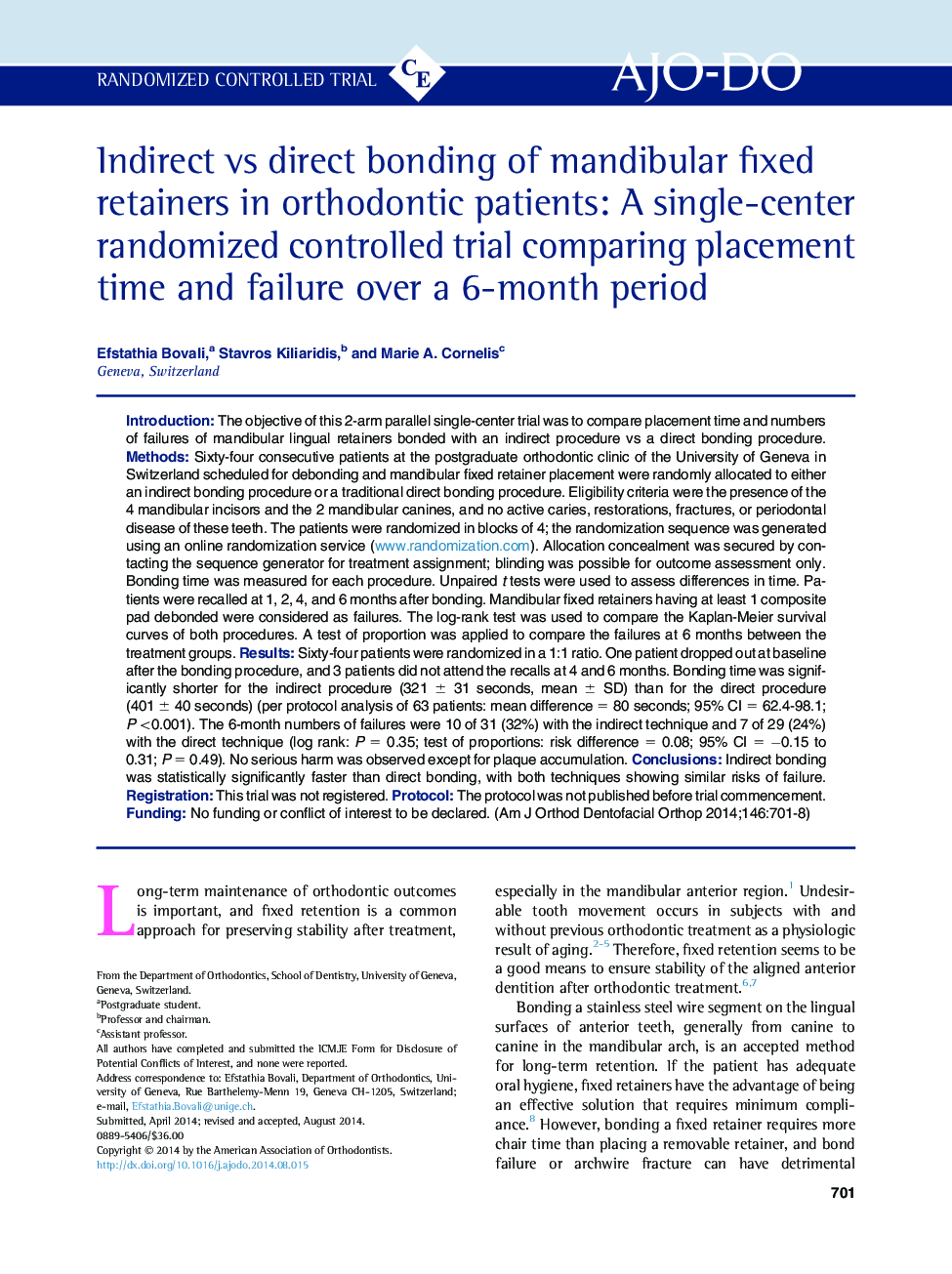| کد مقاله | کد نشریه | سال انتشار | مقاله انگلیسی | نسخه تمام متن |
|---|---|---|---|---|
| 3116105 | 1582695 | 2014 | 8 صفحه PDF | دانلود رایگان |
• Indirect bonding of lower fixed retainers is 20% faster than direct bonding.
• Both bonding techniques seem to have a similar failure risk.
• Failures are more frequent during the first month in both groups.
IntroductionThe objective of this 2-arm parallel single-center trial was to compare placement time and numbers of failures of mandibular lingual retainers bonded with an indirect procedure vs a direct bonding procedure.MethodsSixty-four consecutive patients at the postgraduate orthodontic clinic of the University of Geneva in Switzerland scheduled for debonding and mandibular fixed retainer placement were randomly allocated to either an indirect bonding procedure or a traditional direct bonding procedure. Eligibility criteria were the presence of the 4 mandibular incisors and the 2 mandibular canines, and no active caries, restorations, fractures, or periodontal disease of these teeth. The patients were randomized in blocks of 4; the randomization sequence was generated using an online randomization service (www.randomization.com). Allocation concealment was secured by contacting the sequence generator for treatment assignment; blinding was possible for outcome assessment only. Bonding time was measured for each procedure. Unpaired t tests were used to assess differences in time. Patients were recalled at 1, 2, 4, and 6 months after bonding. Mandibular fixed retainers having at least 1 composite pad debonded were considered as failures. The log-rank test was used to compare the Kaplan-Meier survival curves of both procedures. A test of proportion was applied to compare the failures at 6 months between the treatment groups.ResultsSixty-four patients were randomized in a 1:1 ratio. One patient dropped out at baseline after the bonding procedure, and 3 patients did not attend the recalls at 4 and 6 months. Bonding time was significantly shorter for the indirect procedure (321 ± 31 seconds, mean ± SD) than for the direct procedure (401 ± 40 seconds) (per protocol analysis of 63 patients: mean difference = 80 seconds; 95% CI = 62.4-98.1; P <0.001). The 6-month numbers of failures were 10 of 31 (32%) with the indirect technique and 7 of 29 (24%) with the direct technique (log rank: P = 0.35; test of proportions: risk difference = 0.08; 95% CI = −0.15 to 0.31; P = 0.49). No serious harm was observed except for plaque accumulation.ConclusionsIndirect bonding was statistically significantly faster than direct bonding, with both techniques showing similar risks of failure.RegistrationThis trial was not registered.ProtocolThe protocol was not published before trial commencement.FundingNo funding or conflict of interest to be declared.
Journal: American Journal of Orthodontics and Dentofacial Orthopedics - Volume 146, Issue 6, December 2014, Pages 701–708
